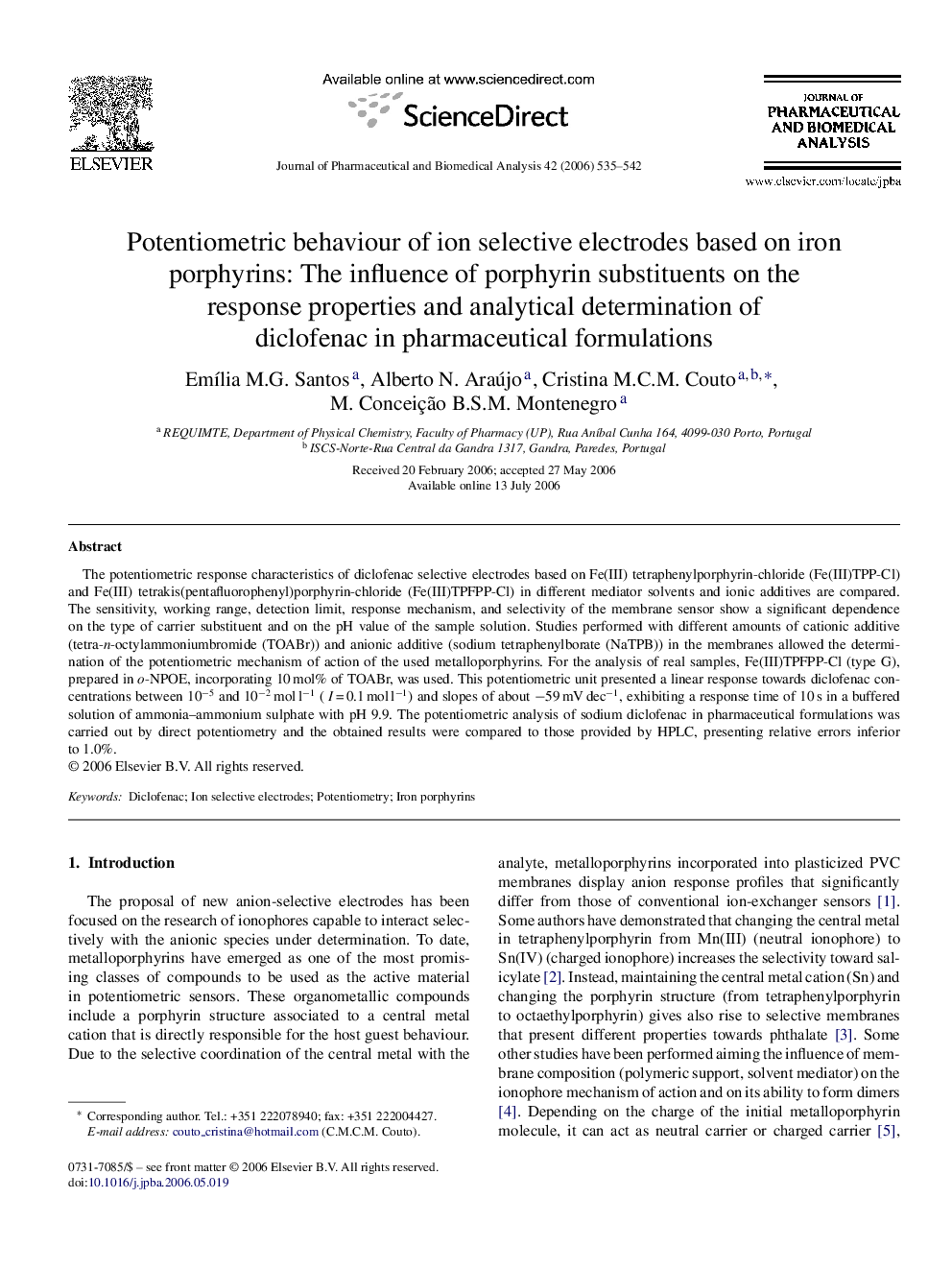| Article ID | Journal | Published Year | Pages | File Type |
|---|---|---|---|---|
| 1224092 | Journal of Pharmaceutical and Biomedical Analysis | 2006 | 8 Pages |
The potentiometric response characteristics of diclofenac selective electrodes based on Fe(III) tetraphenylporphyrin-chloride (Fe(III)TPP-Cl) and Fe(III) tetrakis(pentafluorophenyl)porphyrin-chloride (Fe(III)TPFPP-Cl) in different mediator solvents and ionic additives are compared. The sensitivity, working range, detection limit, response mechanism, and selectivity of the membrane sensor show a significant dependence on the type of carrier substituent and on the pH value of the sample solution. Studies performed with different amounts of cationic additive (tetra-n-octylammoniumbromide (TOABr)) and anionic additive (sodium tetraphenylborate (NaTPB)) in the membranes allowed the determination of the potentiometric mechanism of action of the used metalloporphyrins. For the analysis of real samples, Fe(III)TPFPP-Cl (type G), prepared in o-NPOE, incorporating 10 mol% of TOABr, was used. This potentiometric unit presented a linear response towards diclofenac concentrations between 10−5 and 10−2 mol l−1 ( I = 0.1 mol l−1) and slopes of about −59 mV dec−1, exhibiting a response time of 10 s in a buffered solution of ammonia–ammonium sulphate with pH 9.9. The potentiometric analysis of sodium diclofenac in pharmaceutical formulations was carried out by direct potentiometry and the obtained results were compared to those provided by HPLC, presenting relative errors inferior to 1.0%.
